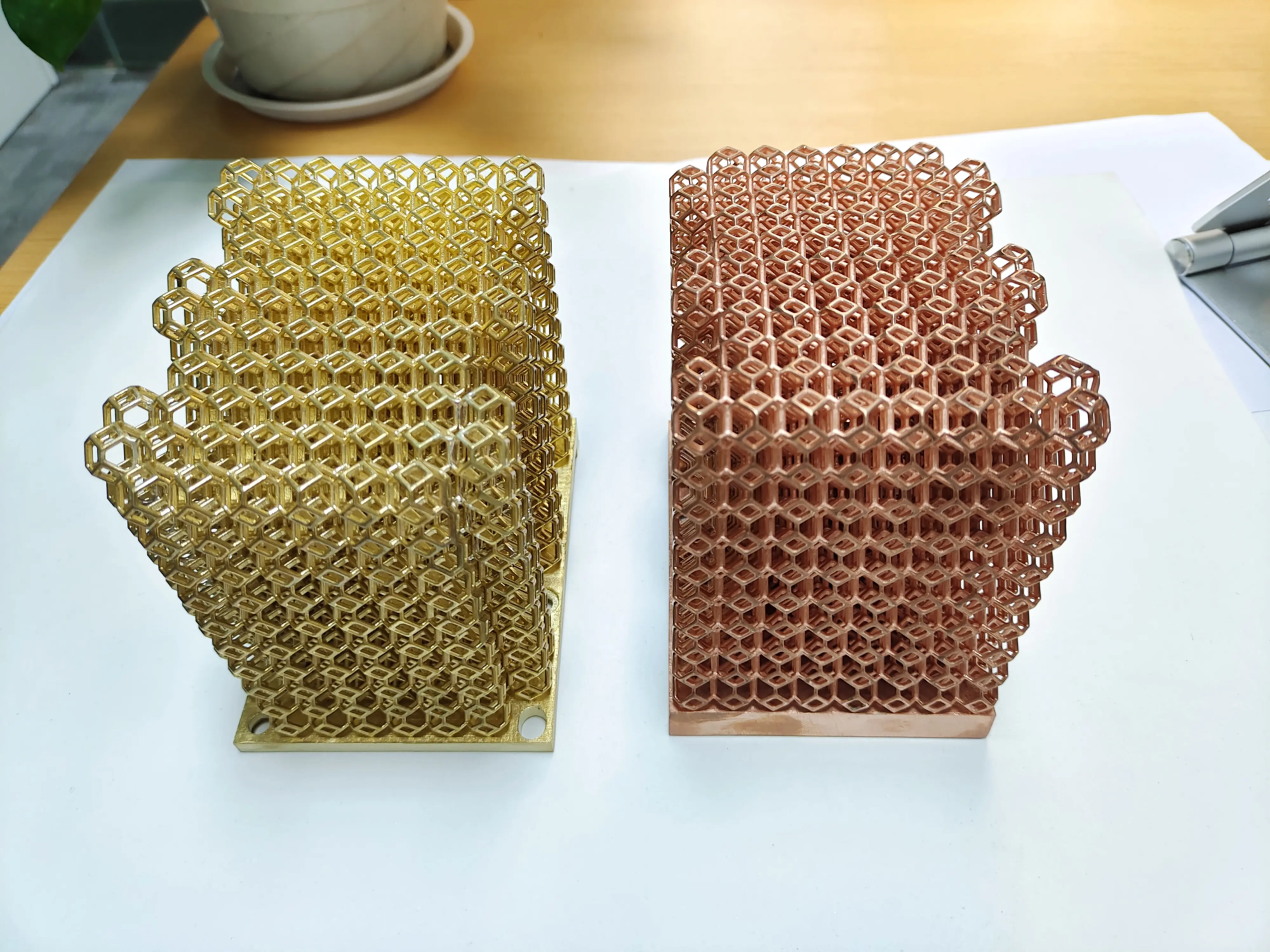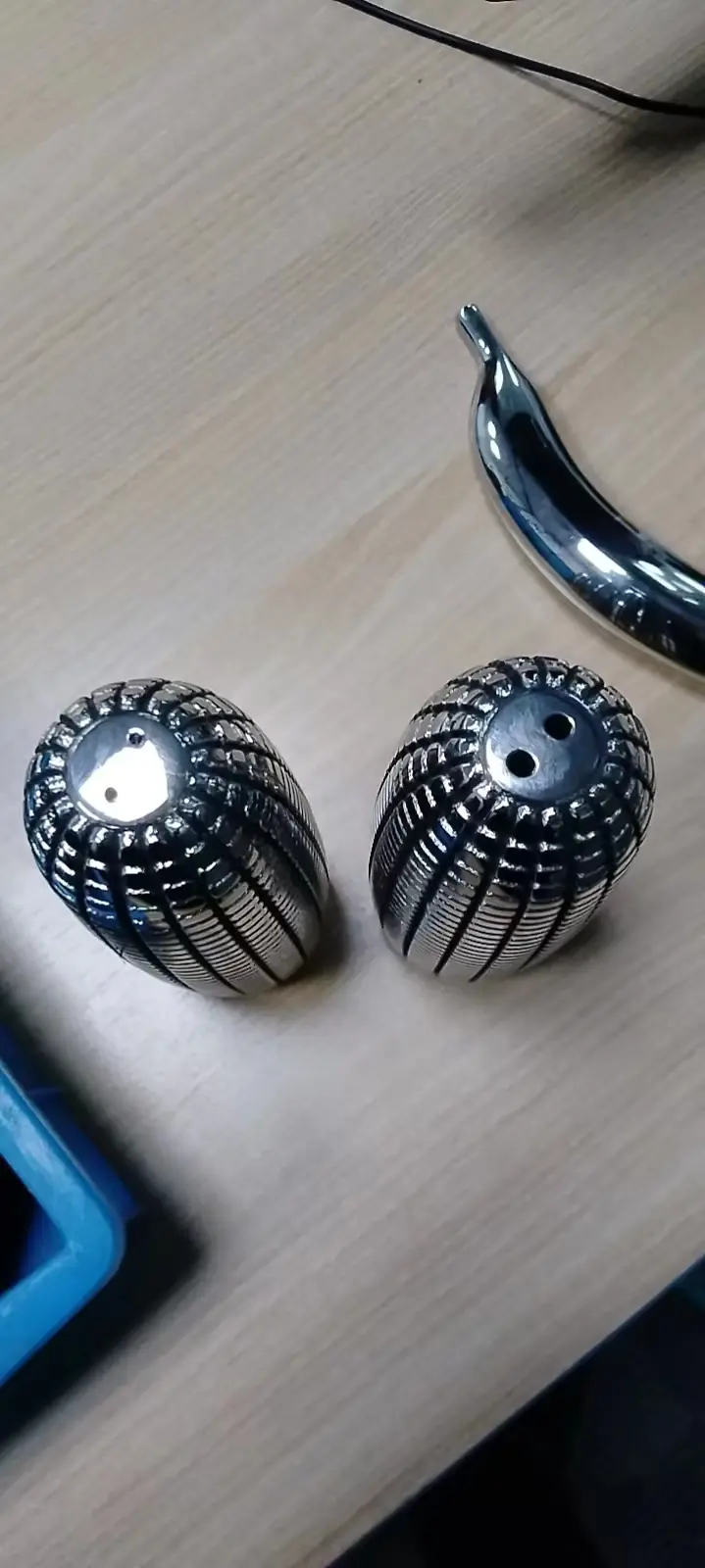The final guide to 3D printer silk type: Choose the right material for your project
Entering the world of 3D printing is exciting, but there are a wide variety of silk materials available. Choosing the right material is more than just color; it’s the basis for your print functionality, aesthetics, strength and durability. In Greatlight Rapid Prototyping, while our core expertise lies in industrial grade metal additive manufacturing (SLM/SLS), we understand that material selection is any Prototype or production process. Let’s uncover the most common types of 3D printer wires to enhance your decision-making abilities.
Why filament selection is important
Think of thin filaments as "ink" For your FDM (Fused Deposition Modeling) 3D printer. Different plastics (even composites) behave very differently under heat, pressure and ambient conditions. Choosing the right material involves balance:
- Mechanical properties: Strength, resilience, flexibility, resistance.
- Thermal characteristics: Heat resistance, glass transition temperature, warpage trend.
- Chemical resistance: Tolerance to solvents, oils, and moisture.
- Printability: Easy to print, bed adhesion requirements, warping, speed.
- Appearance and post-processing: Surface finish, transparency, easy to polish/paint.
- Application requirements: Is it a functional prototype, decorative items, mechanical parts, tools?
Decoded mercerized spectrum
-
PLA (polylactic acid): an accessible all-around device
- The easiest: Made from renewable resources such as corn starch or sugar cane. First choice for beginners.
- advantage: Easy to print (low warpage, print at lower temperatures, no heating bed required), numerous colors/finishes, biodegradable under industrial compost conditions.
- shortcoming: Low heat resistance (deformation of about 50-60°C), relatively fragile (poor impact resistance), and poor chemical resistance. When exposed to moisture/UV light, it degrades over time.
- Best for: Prototypes, decorative objects, toys, models, low pressure applications, educational uses. Latest Trends: Engineering quality with enhanced strength/stiffness.
-
ABS (acrylonitrile butadiene styrene): retro main force
- original: Long used for injection molding (think Lego bricks), it is known for its toughness.
- advantage: Good impact strength, heat resistance (80-100°C), durable, easy to polish and paint, affordable. Compared with PLA, good chemical resistance.
- shortcoming: Prone to warping and layer spacing – a bed that requires heat and a closed printer, emits obvious smoke (a necessity for good ventilation), which is trickier than a PLA.
- Best for: Functional prototype, durable housing, auto parts, tool handles, interlocking components.
-
PETG (polyethylene terephthalate ethylene glycol): balanced behavior
- Strike Gold: Combines many advantages of PLA (easy to print) and ABS (strength, durability) while minimizing their shortcomings.
- advantage: Excellent layer adhesion, high strength and impact resistance, good chemical and water resistance, relatively low warping, FDA compatibility grade for food contact. It’s clearer than PLA.
- shortcoming: Slightly tingling/permeable than PLA or ABS, susceptible to wear (may wear out the brass nozzle) during printing, rather than biodegradable. "sticky" Nature may require specific build board preparation.
- Best for: Functional prototypes, mechanical parts, containers/closes, tool fixtures, medical/educational models, outdoor applications. A very popular choice for powerful prints.
-
TPU/TPE (thermoplastic polyurethane/thermoplastic elastomer): bend, do not crack
- Flexible friends: A series of filaments known for their elasticity and rubber-like properties. Shore hardness indicates flexibility (lower = softer).
- advantage: Excellent flexibility, impact absorption, vibration damping, wear resistance, good surface feel/filling. Available varying hardness.
- shortcoming: Printing can be challenging (flexible wires require slow speed, calibrated tension, preferred direct drive extruder), easy to string and may require heating of the bed.
- Best for: Telephone box, protective bumper, gasket/seal, wearables, soft grip, drone parts, functional hinges.
-
Nylon (polyamide): Strong and elastic
- Engineering toughness: Known for its excellent durability and versatility.
- advantage: High strength, excellent toughness/fatigue resistance, good wear/wear resistance, good chemical resistance, flexibility (especially thinner walls), and biocompatibility grades exist.
- shortcoming: Very hygroscopic (quick absorption of moisture – requires dry storage and print frequently), twisted, high printing temperature (usually 240-260°C+), requires a full metal heat table, usually a fence.
- Best for: Functional gears, bearings, hinges, snapshot assembly, underside parts, custom tools.
-
Composite materials: Enhanced potential
These filaments embed other materials into base plastics (PLA, PETG, nylon, ABS) to enhance characteristics:
- Reinforced/glass filled: Increases stiffness, dimensional stability and heat resistance (e.g. GF-NYLON). Warning: Abrasives – Steel nozzles that require hardening.
- Metal filling (based on PLA/PETG): Filigree (bronze, copper, steel, iron) containing metal powder. After printing, the parts can be heat treated/polished/polished to achieve the metallic appearance/feel/weight. Not as strong as sintered metal. notes: For truly functional metal parts that require structural integrity or complex geometry, Greatlight’s industrial SLM functionality is essential, directly sintered metal powder without any plastic adhesive.
- Full of wood: PLA with wood fiber/dust. Creates a wood-like appearance and texture that is sandy/infectious. Density is lower than pure PLA. Easy to clog.
- Carbon fiber filling: Increased stiffness, strength and weight, dimensional stability. Very abrasive (strengthening nozzle). Higher temperatures are usually required.
- Featured silk: unique features
- ASA (Acrylonitrile Styrene Acrylate): Similar to ABS, but with higher UV stability/weather resistance. Great for outdoor applications. A fence is also needed.
- PC (polycarbonate): Special strength and heat resistance (~110°C+), impact resistance. Required to print (very sensitive, high temperature (280-300°C+), closed mandatory). Prone to pressure cracking under specific catalysts (such as abdominal juice).
- PVA (polyvinyl alcohol): Water soluble. Almost completely used as a supporting material for complex geometric shapes printed by insoluble materials such as PLA or PETG. Careful storage and printer settings are required.
- Buttocks (High impact polystyrene): It acts as a soluble support material for ABS in limonene solvents. Also used for modeling/optical prototyping.
- Peek, Pekk, Peik (UTM): Advanced "high performance" Thermoplastics. Provides incredible thermal stability (>250°C), chemical resistance and strength. These require specialized industrial 3D printers with very high room temperatures (> 300c chambers) and precise control. ((This is directly part of Greatlight’s manufacturing expertise to require aerospace, automotive and medical functional prototypes and end-use parts).
From filaments to functional parts: the role of post-processing and professional services
Although FDM printing offers excellent possibilities, many applications require features beyond their scope.
- Functional requirements: Need true metal strength, extreme temperature resistance or tight mechanical tolerances? Plastic wire has its limits.
- Material complexity: Printing pure metals such as titanium, aluminum, inconel or cobalt chromium requires industrial SLM/SLS technology.
- Surface surface and accuracy: Many functional parts need to be smoother or easier than the surfaces a typical hobby printer has compared to FDM.
- Volume and scalability: FDM is usually slow. Industrial methods are effectively extended.
- Post-processing: FDM parts usually require a lot of finishing – sanding, smoothing, painting, sealing – which can be time consuming.
This is where Greatlight is good at:
As a professional rapid prototyping manufacturer, we specialize in research Industrial Selective Laser Melting (SLM) Metal 3D Printing. We have professionally solved the problem of rapid prototyping of complex metal parts. In addition to printing, we provide Comprehensive one-stop post-processing and sorting services – Heat treatment, precise CNC machining to achieve tight tolerances, polishing, peeling, paint, etc. – Convert printed components into ready-made parts.
Whether your project requires a powerful plastic functional prototype (must closely mimic the material properties of the final part), or a high-strength high-precision metal component, Greatlight offers the technology, expertise and finishes to allow you to conceptually efficiently from concept to finished product. Most materials can be quickly customized and handled.
in conclusion
Navigating the world of 3D printer silk unlocks immense creative and functional potential. Understand the foundations of core materials such as PLA, ABS, PETG, TPU and nylon. Consider composites and featured wires to open the door for enhanced properties such as stiffness, conductivity, or unique aesthetics. It is crucial that you always match your filament selection to the specific needs of your project – no single "The best" Thin filaments, only the best Your application.
For projects that reach the limits of FDM wire, especially demanding prototyping of true metal properties, extreme temperatures, biocompatibility or aerospace grade materials – collaborate with professional rapid prototyping services such as Greatlight to be the best solution. Utilizing industrial SLM technology and our extensive post-processing capabilities, we bridge the gap between innovative design and functional high-performance reality.
FAQ: 3D printer wire selection
- Q: What is the easiest filament for beginners?
- one: PLA is definitely the best filament for beginners. It prints at lower temperatures, on unheated or heated beds, twists in an open environment, has minimal smoke, and comes in a variety of colors.
- Q: Which filament is best for functional parts?
- one: It depends on the function! For general robustness: PETG or ABS. High strength/stiffness: Nylon or carbon fiber composite. flex/Wear: TPU. For high temperatures: ASA or PC. For true structural metal properties: SLM metal printing (see service providers like Greatlight). Always consider environmental conditions!
- Q: Why does my abdominal muscles continue to warp?
- one: ABS shrinks greatly when it cools. To fight twist, you absolutely need one Heating bed (95-110°C) And one Closed The printer constructs the chamber to maintain a high and stable ambient temperature (minimum ~45-50°C). Good bed adhesive (ABS slurry, adhesive spray) and slow cooling are also crucial.
- Q: My filaments are very crisp and easy to stretch. Why?
- one: Some filaments, especially PLA, sometimes nylon, ABS, PET exposed to moisture, become fragile. Absorbent moisture (hygroscopy) It is the most common culprit. Before printing, thoroughly dry the filament using a filament dryer or a low-temperature oven. Poor storage (external sealed bags and desiccants) exacerbates this.
- Q: How should I store filaments?
- one: Store the filaments in Sealed container (Plastic bathtub, zipper bag) Silicone gel drying agent Absorb moisture. Avoid direct sunlight and high temperatures. For extremely hygroscopic filaments, such as nylon or PVA, consider a dedicated filament dry box integrated with a printer or a sealed dry box with desiccant.
- Q: What is the best nozzle for all filaments?
- one: Brass nozzle is standard Abrasive wire (Carbon fiber, glass fiber, metal fill). to this end, Hardened steel nozzles It is mandatory. For very high temperature materials (PC, PEEK), Hardened steel or tungsten carbide nozzles is required.
- Q: When should I consider professional services printing through desktop FDM?
- one: Consider using professional services such as Greatlight Rapid tototing you when you are considering the need: True metal properties (Strength, thermal/conductivity, biocompatibility), Industrial grade thermoplastics (Pee, Peck, Pee), Extremely accurate and complete (Requires CNC processing and printing), Complex geometric shapes It is best to do it with SLA/SLS or SLM, or Quantity of production level Requires speed and repeatability.
Choose your materials wisely to enhance your next project. When your vision requires features other than desktop, feel free to contact experts like Greatlight!





